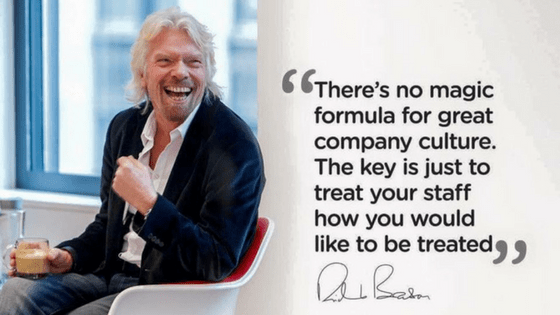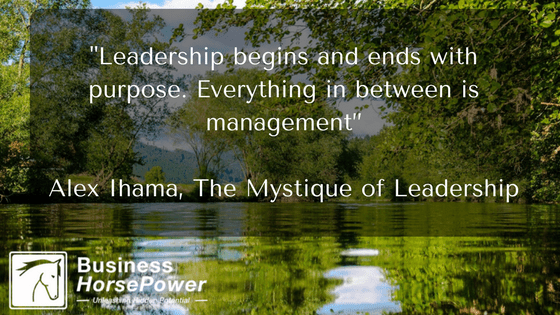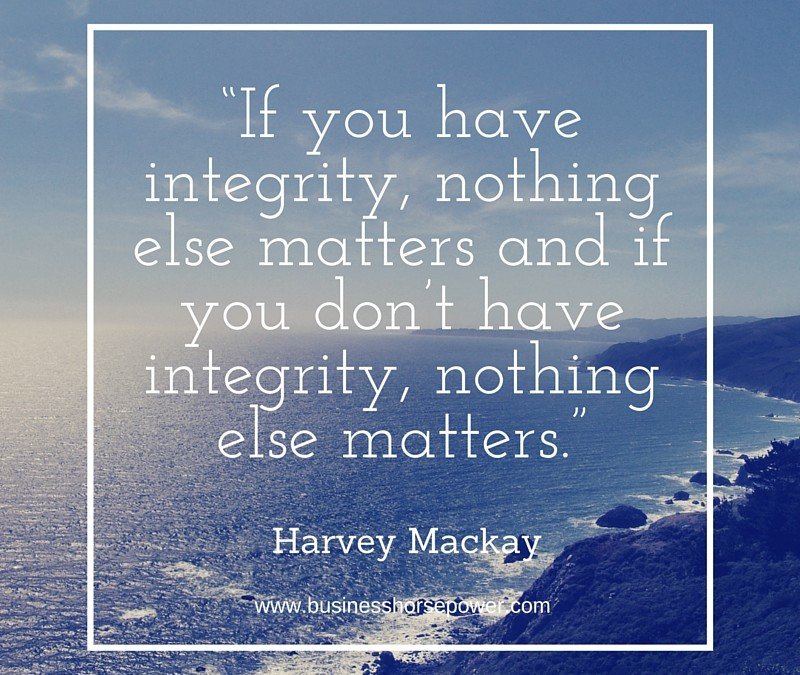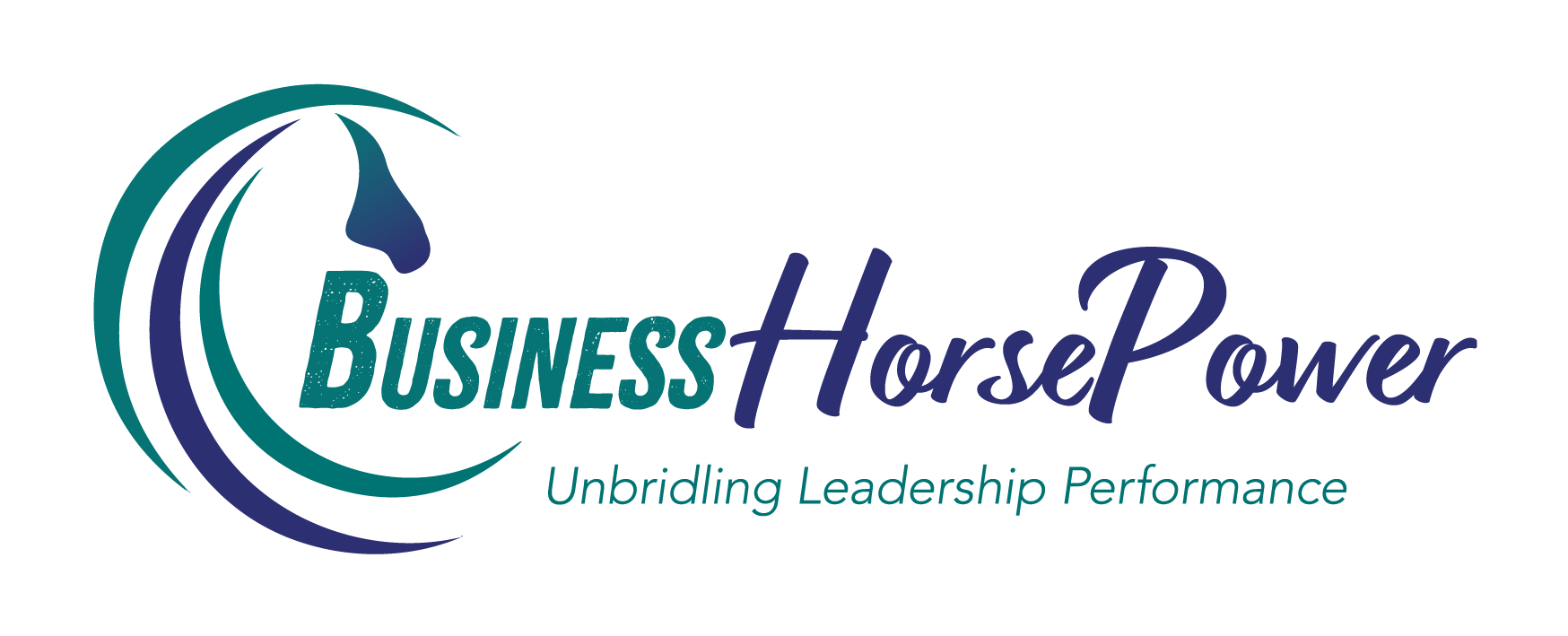
by Julia Felton | Nov 1, 2017
Employee engagement is now the number one greatest issue businesses are faced with today. The world has an employee engagement crisis, with serious and potentially lasting repercussions for the global economy.
Though companies and leaders worldwide recognise the advantages of engaging employees – and many have instituted surveys to measure engagement – employee engagement has barely budged in well over a decade.
Gallup has been tracking employee engagement in the U.S. since 2000. Though there have been some slight ebbs and flows, less than one-third of U.S employees have been engaged in their jobs and workplaces during these 15 years. According to Gallup Daily Tracking, 32% of employees in the U.S. are engaged – meaning they are involved in, enthusiastic about, and committed to their work and workplace. Worldwide, only 13% are engaged.
Gallup’s WorldPoll 2016 Survey is even more alarming as it reveals that the percentage of UK employees feeling engaged at work has plummeted to just 8%, down from 17% in 2012. In other words, about one in 12 British employees are highly involved in and enthusiastic about their work and workplaces. These employees psychologically “own” their work, helping move their organisations forward by driving performance and innovation. The bulk of employees in the U.K. –73% — are classified as “not engaged,” meaning they are psychologically unattached and putting little energy or passion into their work. The remaining 19% are “actively disengaged,” resentful that their workplace needs aren’t being met and likely to be acting out their unhappiness on the job.
There’s little doubt that the lack of intrinsic motivation signalled by low engagement scores affects labor productivity. Gallup researchers regularly conduct a “meta-analysis” of recent workplace studies to estimate the relationship between employee engagement and other conventional indicators of business health. The 2016 meta-analysis, which included more than 82,000 business units in 73 countries across 49 industries, found that units in the top one-fourth of engagement scores were 17% more productive and 21% more profitable than those in the bottom one-fourth.
Engaged employees help produce favourable business outcomes in many ways, including though higher retention rates, lower absenteeism and more positive relationships with customers and coworkers. They are more productive largely because they feel valued and well-supported by their organisations — particularly by their immediate managers — and their work aligns with their natural abilities and personal developmental goals.
On average, a fully engaged workforce has:
- 22% higher profitability
- 21% higher productivity
- 10% higher customer engagement
- Up to 65% lower staff turnover
- 37% lower absenteeism
Great leaders realise that the key to improving engagement is to create an inspiring culture, share an inspiring vision and empower team members to contribute positively to the business. When employees feel listened to and valued and also share a passion for the business purpose then incredible things are possible. In my experience team members don’t thrive and contribute their best in a dictatorial environment. They need to feel ownership and take responsibility for their operations – and this is only possible when clear expectations are set and they are held accountable for their actions.
Great leaders understand the importance of consultation and coaching to get employees on board, whilst also acknowledging that they too must walk the talk. If you want your employees to be more engaged as a leader you need to be authentic, transparent and vulnerable. You need to go out of your way to build relationships with others and reward performance. At Engage and Grow we help companies activate 12 engagement keys to make this happen, and the results are typically increases in employee engagement levels of between 250-350% depending on the type and size of the business.
Wouldn’t you like that for your business? If so join me on Weds 22nd November when I will be hosting a free webinar on How To Make Every Team Member A Profit Centre For Your Business. It will radically change your views on the power of engagement and how creating a great business culture is imperative if you are to boost productivity and profitability.
Julia Felton (aka The Business Wrangler) is the founder of Business HorsePower. Business leaders, entrepreneurs and executives hire her to accelerate their business performance by harnessing the energy of their people to work more collaboratively together. By aligning purpose with actions the team achieves exponential results as everyone starts pulling in the same direction.
Julia believes that business is a force for good and through designing purpose-driven businesses that leverage the laws of nature, and the herd, you can create businesses founded on the principles of connection, collaboration and community that make a significant impact in the world.

by Julia Felton | May 10, 2017
I have been focusing a lot on company culture recently so I just loved this quote from Richard Branson as a company’s culture can be a severe constraint on its success or alternatively a source of strength and competitive advantage.
The culture of a business describes the character of a group of people and how they think and act as a collective. A company with a strong character will have a culture that promotes caring and treating all people well, regardless of rank and role in the business. Team members will feel protected within the company and know that colleagues have their back. This contrasts with a culture of weak character, where people feel that any protection they have comes from their ability to manage politics, promote their own success and watch their own backs.
The purpose of a healthy, high-performance culture is to support the long-term success of the business. Culture drives business results and a healthy culture creates a fulfilling place to work. In shaping culture, it is important to know what strategies, business goals and initiatives the business’s behaviours are there to support
Culture can often be viewed as just something those large corporates do but every business has a company culture. Typically in smaller businesses the company culture reflects the values of the business owner. Their values determine the activities and type of environment that the business creates. The owners values reflect whether the business is say fun and quirky or professional and serious. There is no magic formula when it comes to creating your company culture except that a great company culture focuses on the team members. Keep the team members happy. Reward and empower them and they will deliver amazing customer service, which in turn will translate into greater productivity and profitability for the business.
So how do you treat your team members? Remember you are part of your own team. Are you rewarding yourself and taking care of yourself just like you would a team member or are you being hard on yourself and beating yourself up with a stick? Be kind to yourself and remember the adage: “how you do something is how you do everything”.
What are you doing in you business that is getting mirrored in other areas of your life?
Julia Felton (aka The Business Wrangler) is the founder of Business HorsePower. Business leaders, entrepreneurs and executives hire her to accelerate their business performance by harnessing the energy of their people to work more collaboratively together. By aligning purpose with actions the team achieves exponential results as everyone starts pulling in the same direction.
Julia believes that business is a force for good and through designing purpose-driven businesses that leverage the laws of nature, and the herd, you can create businesses founded on the principles of connection, collaboration and community that make a significant impact in the world.

by Julia Felton | Apr 12, 2017
Have you ever stopped to consider what drives you? What gets you out of bed in the morning? What gives you motivation and inspiration to keep on going in the face of adversity? The answer to the question is purpose. The reason why you do what you do. And this is why everything in business starts and ends with purpose. If as leaders we don’t define the purpose for the business, then the business is like a rudderless ship. It has no direction, no GPS, and team members don’t know what is happening.
Purpose gives team members a shared vision. It unites the team behind a single cause. It brings clarity and certainty. It helps define the values for the business, as they need to be aligned with the purpose. And business values help decision making as they provide a framework that identifies which activities you will pursue. If following an opportunity or undertaking an activity conflicts with your values then it is easy to say No, as that action is out of alignment with what you stand for.
Purpose stands at the core of everything that we do in business and right now there is a growing trend, as companies become more consciously aware, for them to become purpose-driven. Purpose is being put clearly front and centre of everything a company does. And let’s be clear, the purpose is not self-serving, for example, to make more profits. That’s not motivating to anyone. Companies focusing on becoming purpose led are recognizing that business is a force for good and are focusing on how the business impacts and contributes to society generally.
An example of a company with a great purpose is Whole Foods. Their purpose, which they call their declaration of independence is clearly written on their website and pervades everything they do.
It states: Whole Foods Market is a dynamic leader in the quality food business. We are a mission-driven company that aims to set the standards of excellence for food retailers. We are building a business in which high standards permeate all aspects of our company. Quality is a state of mind at Whole Foods Market.
Our motto — Whole Foods, Whole People, Whole Planet — emphasizes that our vision reaches far beyond just being a food retailer. Our success in fulfilling our vision is measured by customer satisfaction, team member happiness and excellence, return on capital investment, improvement in the state of the environment and local and larger community support.
Our ability to instill a clear sense of interdependence among our various stakeholders (the people who are interested and benefit from the success of our company) is contingent upon our efforts to communicate more often, more openly, and more compassionately. Better communication equals better understanding and more trust.”
When you read this purpose statement you can’t help but feel inspired. It’s clear about what the company does, the change it is wanting to make in the world and how team members contribute to this. This purpose provides clarity, direction, focus and inspiration. As a team member you immediately know what is expected of you. A clear purpose is the fuel that ignites superior performance and delivers greater productivity and ironically profitability, as everyone is moving towards the same vision in a unified way and the business gets into a state of alignment which creates massive flow,
The leaders have clearly stated what needs to happen in the business and why. That’s why “leadership begins and ends with purpose. Everything in between is management”
I’d love to hear your thoughts on this and if you need any help defining the purpose for your business or just want to connect with me to discuss how purpose-driven companies are making a real difference, then I’d love to hear from you. Simply book a conversation with me here.
Julia Felton (aka The Business Wrangler) is the founder of Business HorsePower. Business leaders, entrepreneurs and executives hire her to accelerate their business performance by harnessing the energy of their people to work more collaboratively together. By aligning purpose with actions the team achieves exponential results as everyone starts pulling in the same direction.
Julia believes that business is a force for good and through designing purpose-driven businesses that leverage the laws of nature, and the herd, you can create businesses founded on the principles of connection, collaboration and community that make a significant impact in the world.

by Julia Felton | Mar 15, 2017
Are you clear on the impact you want to make in the world? Do you know the purpose of your business? These are questions I have pondering on over the last few months as I look at how to reset and re-ignite my business.
The world is changing, business models are changing and the old approaches to business are no longer working. Customers are seeking something more impactful, as are team members. Research by Neilsen has identified that in 2013 54% of consumers opted to purchase products with an environmental and social benefit, up from 20% in 1993.
Furthermore, according to Cone Communications, millennials who are the largest living segment of our economy, represent $2.45 trillion in spending power are 60% more likely to engage with brands that discuss and act on social causes. Combine this with the fact that 53% of millennials say they work harder when they feel the organization is making a difference. Surely it’s time for you to consider what impact and legacy you want your business to leave?
Here are some examples of companies that are making a real environmental and social difference. They have been called Evolved Enterprises:
Toms Shoes: they give a pair of shoes away to a child in need for every pair purchased. To date they have given away 35,000,000 pairs of shoes, which also means that they have sold 35,000.000 pairs of shoes.
Bombas: after learning that socks were the most requested item of clothing at homeless shelters, they set about re-inventing the sock and donate one pair of socks to the homeless shelter for every pair purchased. And in just 18 months they have donated 1,000,000 pairs of socks to the homeless shelters
Warby Parker: have partnered with VisionSpring and now distribute one pair of glasses to someone in need for every pair purchased. By circumventing traditional channels, bypassing retail, designing glasses in house, and engaging with customers directly, they are able to provide eyewear at a fraction of the going price whilst combining that with making an incredible social impact. After just a few years the company is valued at over $1 billion according to the Wall Street Journal
And here’s the really interesting part research continues to show that this is not just a trend but a serious seismic shift. It confirms what you might have felt in your heart already but now the data is backing it up. It is VERY possible to do good in the world and do well for yourself and your company all at the same time.
Research by Raj Sisodia in his book Terms of Endearment reveals that between 1998 – 2013 the cumulative returns of Evolved Enterprises eclipsed the S&P500 by 1400%. That’s a 14 to 1 difference. So it is possible to make a profit whilst also doing good in the world. This is why purpose trumps profit everytime.
However, let’s be clear your reason and purpose to make a difference has to come from a genuine, authentic desire to make a greater impact in the world. Over the last two decades we have seen many companies embrace Corporate Social Responsibility (CSR) initiatives, however, many of these have failed to have real impact because the intention behind them has been flawed. Companies have engaged in CSR activities because they felt they should rather than they really wanted to and really valued the impact they could make. In today’s economy where trust and transparency are paramount applying the Evolved Enterprise framework for the wrong reasons will only fast forward your demise. You have been warned.
I’m really curious to hear about what impact you and your business are making, so please drop me an email and share that with me. And if you’d like to learn more about how you can create a purpose-driven, impactful business then please connect with me and let’s explore what’s possible
Julia Felton (aka The Business Wrangler) is the founder of Business HorsePower. Business leaders, entrepreneurs and executives hire her to accelerate their business performance by harnessing the energy of their people to work more collaboratively together. By aligning purpose with actions the team achieves exponential results as everyone starts pulling in the same direction.
Julia believes that business is a force for good and through designing purpose-driven businesses that leverage the laws of nature, and the herd, you can create businesses founded on the principles of connection, collaboration and community that make a significant impact in the world.

by Julia Felton | Mar 30, 2016
This week I have been thinking a lot about integrity. About what it is and why increasingly I feel that this value is lacking in business. So what is integrity? The dictionary definition is “the quality of being honest and having strong moral principles” and “the state of being whole and undivided”, so how come I am not experiencing this right now? And it seems I am not alone, many of my friends have been commenting on this too recently.
To lead effectively good leaders must demonstrate the right virtues They must demonstrate honesty, humility, authenticity, credibility, courage and accountability. But the most important leadership virtue is integrity. In their book, “The Corporate Mystic Dr. Gay Hendricks and Dr. Kate Ludeman, define integrity the following way, “The mastery of integrity comes down to three things: being authentic with yourself, being authentic with others, and doing the things you have said you would do.”
And perhaps that is the challenge. So often I come across people not walking their talk. They are not being authentic and not demonstrating consistent, honest behaviour. They are misaligned and in-congruent and maybe that is why I struggle to connect with them.
Leadership is influence, but we need leaders who can be trusted and act with integrity. Integrity is a critical factor in the performance of executives and managers. If you are in a leadership role, you have the power to influence people in your organization. When relationships in your organization are built on trust and integrity, you can be sure that your team will be able to reach higher performance. As Stephen R. Covey says, “Personal integrity generates trust and is the basis of many different kinds of deposits.” Lack of integrity can undermine many relationships.
Just as lack of integrity erodes relationships so acting in integrity builds relationships, and in my experience can be the defining difference between business success and failure
So today’s thought is what relationships are you undermining and putting in jeopardy by not being authentic and in integrity?
Julia Felton (aka The Business Wrangler) is the founder of Business HorsePower. Business leaders, entrepreneurs and executives hire her to accelerate their business performance by harnessing the energy of their people to work more collaboratively together. By aligning purpose with actions the team achieves exponential results as everyone starts pulling in the same direction.
Julia believes that business is a force for good and through designing purpose-driven businesses that leverage the laws of nature, and the herd, you can create businesses founded on the principles of connection, collaboration and community that make a significant impact in the world.

by Julia Felton | Jan 16, 2016
When I’m often speaking with my clients I hear the words “FAILURE IS NOT AN OPTION” and whilst I can concur with this principle what often gets overlooked is the fact that it is failure that leads to success. Whilst an overall intention would be for the business not to fail, the reality is that along the way there will be lots of failures – or as I prefer to call them opportunities to learn. There is nothing wrong with failure so long as the learning is taken and applied and the same error is not repeated again. Thomas Edison could have had 1,000 failures before he created the light bulb whereas he choose to re-frame that as 1,000 opportunities to learn what doesn’t work so that he could improve on this next time.
“Failure provides the opportunity to begin again, more intelligently.” ~ Henry Ford
One of the challenges in business is many business cultures do not activity support the concept of failure, aka opportunities to learn, and when team members mistakenly think they they cannot fail it stifles creativity and innovation and this can lead to the business becoming stagnant and unresponsive to changes in the competitive landscape.
Recently I have been working with a group of elite leaders, who coming from the world of sport, more than others, really believe that failure is not an option and that winning is the only imperative. The challenge is that this attitude has been affecting the culture of the business and so has been hampering the innovation and creativity in their business.
The harsh fact is that businesses often fail because they don’t have a high enough degree of innovation, co-operation and collaboration. Inevitably, a competitor comes along with a superior teamwork, co-operation, collaboration and inter-dependency and eventually the less effective business is unable to compete. Take Southwest Airlines as an example. They used to be a small, inconsequential airline operator and yet today, through taking an innovative approach to their business, they have now become one of the most profitable and valuable airlines in the United States.
For business to be successful in the 21st century it is imperative that it fosters an entrepreneurial spirit amongst team members. Long term, sustainable competitive advantage is achieved through out-innovating the competition in ways that enhance efficiency and create greater value for customers. To achieve this, team members need to be unleashed and allowed to tap into their own genius. Imagine the impact if every single person working for a company were able to create and innovate. Imagine how much more intellectual capital would be available to the business, as each person would be accessing their full potential, making a real contribution and be in Flow. It would be a win-win situation for everyone.
Contrast this with the traditional control and command structures where the message to team members is typically something like, “We don’t pay you to think: we just pay you to do your job”. As a result, great opportunities to be creative and innovative are lost because the team members interfacing with the customers do not feel empowered to make decisions and challenge the status quo. Ironically, the one thing that the command and control structure seeks to achieve in fact hampers business growth as resources are not optimised and business opportunities are wasted.
Whole Foods is a great example of a company that has managed to empower their team members by creating a workplace based on love and care and that is also fun, where team members aren’t afraid and collaboration reigns. It is this release of creativity and innovation that has enabled the company to improve and evolve rapidly.
Without a collaborative culture, this innovation and creativity would have been of limited value. It is no good for one business unit to come up with a great idea and then not share it with the rest of their colleagues. A culture of collaboration enables successful ideas and innovations to be shared and spread rapidly throughout the business. The great thing is that technology can help rapidly disseminate information so new ideas can be almost instantly put into action. With even more Big Data metrics than ever before, businesses can effectively monitor and track how these new initiatives are impacting business performance.
This continual review process creates the opportunity for continual learning and improvement within the business. In this set up, business truly becomes a living system that learns, grows, evolves, self-organises – and even self-actualises – on its own. The right degree of decentralisation, empowerment, love and care in the workplace enables business to adapt, innovate and evolve faster enabling them to enjoy strong, sustainable competitive advantage.
So how are you creating a culture of innovation and creativity within your business? What systems and processes do you have in place to finely manage the balance of innovation with the need for some structure? Are you business leaders demonstrating and role modelling what innovation looks like? What are the consequences of not failing to encourage failure?
If you’d like to learn more about how to create a create a culture of innovation and collaboration then you might enjoy reading The Alchemy of Change: Ancient Wisdom Reinvented to Unleash The Hidden Potential of Leaders and Teams
Julia Felton (aka The Business Wrangler) is the founder of Business HorsePower. Business leaders, entrepreneurs and executives hire her to accelerate their business performance by harnessing the energy of their people to work more collaboratively together. By aligning purpose with actions the team achieves exponential results as everyone starts pulling in the same direction.
Julia believes that business is a force for good and through designing purpose-driven businesses that leverage the laws of nature, and the herd, you can create businesses founded on the principles of connection, collaboration and community that make a significant impact in the world.

by Julia Felton | Mar 30, 2011
As Spring breaks, the days get longer and daffodils begin to blossom I am reminded of the first time I learnt about the concept of expansion and contraction from Chris Attwood at the Masters Gathering in San Diego in June 2009. In essence what Chris said is that at every point in life there are expansion and contraction points. Just think of the seasons. Spring and Summer are the seasons of expansion (growth and development) whilst Autumn and Winter are seasons of contraction (of slowing down and resting). Just like the Ying Yang one can’t exist without the other and so it is in business.
There are times when your business flourishes and grows and times when it stagnates (to recuperate and rest). The challenge for most of us is when the contraction happens we give up, but this is just one of nature’s cycles. Roger Hamilton summarises this analogy in his book “Wink”. There is a season for planting and a season for reaping. Furthermore, he goes on to discuss the Law of Gestation. The seeds you plant must be given time to develop and mature before you can harvest them. How often in business do we get impatient and reap too early? I know I do. So as we move into Spring consider your business life cycle and make sure you don’t pull up your seeds before they are ready.
Recently I have been rather busy and not paying my lovely ponies Bracken and Thistle the attention they deserve. I’m been rushing, never stopping – acting in an expansive state. The one sure thing that Thistle has been teaching me is to slow down and wait. What I cause the pause. She does this by stopping when I lead her to the field. She just plants her feet and refuses to move until I slow down. The more I try to encourage her forward the more stubborn she becomes. I now realise if I pause (take a breath) and wait she will then move forward. So leading her has become a game – like the ebb and flow of the sea.
All too often in life out of desire for instantaneous results and goal orientation means that we fail to pause. To survey what is around us and reflect on what is happening. Thistle has been teaching me the value of this because it is in the pause that great magic can occur. How and when will you pause today?
Julia Felton (aka The Business Wrangler) is the founder of Business HorsePower. Business leaders, entrepreneurs and executives hire her to accelerate their business performance by harnessing the energy of their people to work more collaboratively together. By aligning purpose with actions the team achieves exponential results as everyone starts pulling in the same direction.
Julia believes that business is a force for good and through designing purpose-driven businesses that leverage the laws of nature, and the herd, you can create businesses founded on the principles of connection, collaboration and community that make a significant impact in the world.

by Julia Felton | Feb 1, 2011
Life lessons come in many forms and this week has been no exception. All week we have been introducing the three horses in our herd to two new friends. They have been meeting daily over the fence like getting to know each other before we eventually put all five horses in the field together. Watching their behaviour over the past few days has been amazing. My older horse, Toby, who is currently the leader of his group, has been over-dominant with the new horses. Snorting and really establishing himself as the head honcho in charge of everything. He has actively been stopping his best friend, Charlie, engage in any way with the other horses. It has been so tiring watching him all day preventing Charlie from going near the other horses. He has to be aware all the time where Charlie is and then move him in the other direction. Charlie, I sense, is really bord of this but quietly acquiesces as he is not the type of horse to engage in confrontation.
There antics remind me strongly of the challenges that come about when two companies integrate. One group often wants to dominate and acts in an assertive fashion whilst the other group complies, not having the strength for the battle right now. Like Charlie they decide to go with the flow until things settle down. What to me is interesting is that Toby’s dominant behaviour is not his natural state and in fact I would go so far as to say that the only way he is behaving this way is because he is scared. Scared of losing his friends and his position in the herd. And I bet that is what happens when companies merge. Fear drives behaviour as we want to maintain security and keep things just the way they are. Yet we all know that without change no organisation or individual will develop and grow.
My own experiences of being part of a corporate merger comes from when Andersen UK (formerly Arthur Andersen) was acquired by Deloitte UK following the Enron fiasco. Whilst with hindsight the merger went relatively smoothly there were power plays occurring all over the organisation as each company vied to maintain their system and solution because it was better than what the other party had. What was interesting was the way that some people ran scared. Afraid of what might happen they sought to surround themselves with allies who could ensure that they would be protected – in much the same way that Toby is protecting himself by controlling Charlie’s loyalty to him. However, in the end was this strategy effective. Possibly in the short-term, but in the long-term I would suggest not as people (just like Charlie) do not want to be manipulated. I’ll be really interested to see what develops over the next few weeks and to see whether Toby’s strategy pays off or if it will come back to haunt him.
Have you ever been involved in a corporate merger/take over and if so how did it go. Love to read your comments below.
Julia Felton (aka The Business Wrangler) is the founder of Business HorsePower. Business leaders, entrepreneurs and executives hire her to accelerate their business performance by harnessing the energy of their people to work more collaboratively together. By aligning purpose with actions the team achieves exponential results as everyone starts pulling in the same direction.
Julia believes that business is a force for good and through designing purpose-driven businesses that leverage the laws of nature, and the herd, you can create businesses founded on the principles of connection, collaboration and community that make a significant impact in the world.

by Julia Felton | Dec 7, 2010
For the last few days it has been snowing and my horses – Toby and Charlie – have loved this. They have been out frolicking and rolling in the soft powdery snow making some pretty good disguises for themselves. Their playfulness has been inspiring and heart-warming for me as I’ve dug my car out of snow drifts and cleared pathways to lead them to the field. Today, the snow has finally began to melt and where there was once white, fluffy snow we now have large lumps of solid ice. The landscape has changed beyond recognition.
Given the better weather (of course it’s all relative) today I decided to take Charlie for a short ride and something amazing happened. The piles of snow-ice, that only a few days ago were his best friend, and now his worst enemy. He is terrified of them and keeps darting to the far side of the road to avoid them. I find this all really amusing, that such a simple change in something can cause such a dramatic effect.
I’m reminded of something that one of my mentors once told me. “It only takes slight shift to alter the course of your life”. Just think about the fact that it only takes a one degree change in temperature to convert water to steam or indeed water to ice. This is such a tiny change and yet most of us ignore making these types of minor changes in our lives as we think that the effect won’t be significant enough. We live in an instant gratification society and want results now, when in fact a number of small changes done day in day out will make a massive difference to our lives.
Jeff Olson explains this concept beautifully in “The Slight Edge”. In this book he describes a water-lily on a pond. On day one the water-lily covers just tiny portion of the pond, but on day two the waterlily doubles and then on day three doubles again, and again and again. Eventually after 30 days the entire pond is covered by water lilies. At the outset you would never have thought that was possible and yet repetition of this tiny change magnifies itself disproportionately resulting in amazing results.
So what small change will make in your life today that will magnify itself into a massive change tomorrow?. I’d love to hear what you choose.
Julia Felton (aka The Business Wrangler) is the founder of Business HorsePower. Business leaders, entrepreneurs and executives hire her to accelerate their business performance by harnessing the energy of their people to work more collaboratively together. By aligning purpose with actions the team achieves exponential results as everyone starts pulling in the same direction.
Julia believes that business is a force for good and through designing purpose-driven businesses that leverage the laws of nature, and the herd, you can create businesses founded on the principles of connection, collaboration and community that make a significant impact in the world.















